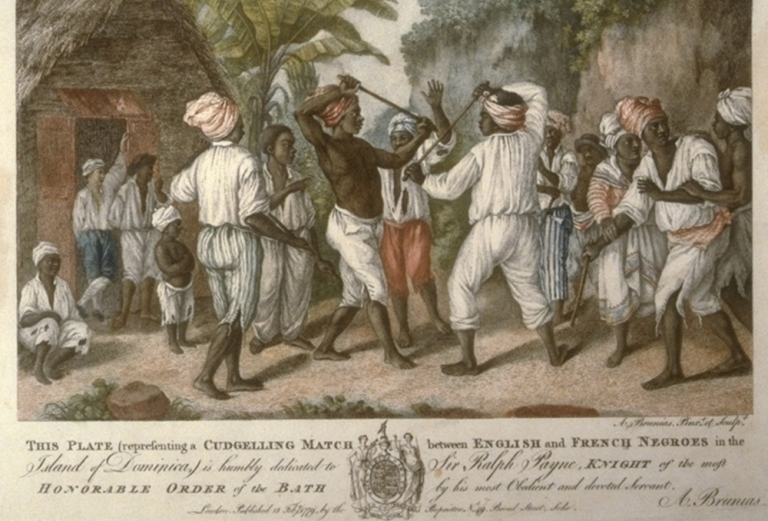Dance & martial arts
Enslaved Africans brought their cultural traditions with them to the Americas. One particularly useful practice given the violence of slave societies was martial arts.

Kalenda was a stick fighting martial art, created through the blending of different West African stick fighting traditions. Its practice amongst the enslaved helped to develop their skill at sword fighting, and the moves could easily be adapted for the use of blades.
This is exactly what happened in the early stages of the Haitian Revolution (1793), when the rebels armed themselves with the same machetes they had used to cut cane.
It is still practiced in Haiti and across the Caribbean, including in Trinidad where special competitions are held during Carnival. These fights are accompanied by music and song, and the fighters perform dances.
Dance was central to protecting cultural traditions amongst enslaved Africans. It cut across language barriers between African people, enabling them to communicate with each other and without their enslavers’ knowledge.
Through dance, enslaved people could express their suffering, mark notable events – births and funerals – and ridicule their enslavers.
Modern-day carnival has its roots in African festival traditions such as Jonkonu, performed around Christmas time in the Caribbean. Revellers would dress in masks and bright costumes and travel house-to-house clapping, singing and dancing. The performers would expect house-owners, including their own enslavers, to come outside and pay them in coins.
Research report on Kalenda by Isaac Crichlow